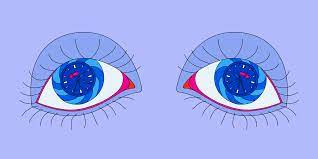Now that we’ve fallen back to Standard Time it’s dark at 5 p.m. By this time next month it will be dark at 4:30. After taking a non-scientific pole of the people around me, I can say with confidence that this change is not popular with most people.
Most of us don’t embrace the end of daylight saving time which brings with it dark evenings, and before too long, dark mornings too. But, when we ‘fall back’ and return to standard time our body is more in sync with the circadian rhythms of our biological clock which impacts our sleep and our health.
Standard Time Embraces Circadian Rhythms
Circadian rhythm is a built-in 24 hour cycle that all living beings – including plants, animals, fungi and cyanobacteria – possess. “There are clear patterns of brain wave activity, hormone production, cell regeneration and other biological activities linked to this daily cycle.” (Science Daily) There are a number of things that can disrupt our circadian rhythm such as travelling through time zones, working the night shift, indoor lighting, drug use, and springing forward into Daylight Savings Time.
A large study in Central Europe, followed sleep patterns of 55,000 people and found that natural sleep patterns are in sync with standard time. What this translates to is good news for the 1.6 billion people that moved their clocks back and return to ST on Sunday.
Too Much Darkness
If it’s so good for us, why don’t we like it? The biggest reason is that we feel we are being cheated out of daylight. If you are a day shift worker that gets off 5 or 6 p.m., you’ll be greeted by darkness when you leave work beginning next week. That makes us feel like we don’t have as much time to be active or get things done. Research shows that’s not true. We will, in fact, be back in cadence with nature which improves sleep quality and overall health.
Just knowing that you are physiologically in sync with the planet may not be enough to keep you positive about the time change. Here are five tips that will ensure a smooth transition to the season of shorter days and longer nights.
Five Tips To Help You Cope
1. Workout Before Your Day Begins – Use your body’s natural inclination to want to rise earlier to get a workout in before you day begins. A walk or bike ride outdoors is a good option since sunrise is earlier. If that doesn’t work, a 20 or 30 minute walk on the treadmill, an on-line workout, or DVD will get you moving and give you something to feel good about the rest of the day. For suggestions on free workouts that you can access from the comfort of your own home, check out Liongate’s Be Fit Channel. For even more options, find a post I wrote about free on-line workouts here.
2. Take Sunshine Breaks – Find an opportunity to get outside for at least 10 to 15 minutes every day with some skin exposed so that your levels of Vitamin D don’t dip this winter. For people that live in areas of the world that experience four seasons, the period from September to April can wreak havoc on our body’s ability to generate adequate amounts of Vitamin D through sunlight exposure alone.
A deficiency in the sunshine vitamin can result in Seasonal Affective Disorder which brings about symptoms of fatigue, depression, and a feeling of malaise. If you think you would benefit from Vitamin D supplements your doctor can assess your levels with a simple blood test. Vitamin D in liquid form can be purchased at the local pharmacy. It’s inexpensive to buy and easy to digest.
3. Stay Active In The Evenings – When it’s dark at 5 p.m., resisting the temptation to put on sweats and slippers for a night in front of the T.V. can be a challenge. Find ways to keep active in the evenings either inside or out of the home.
Check the listings for your local library, park district, Y and community college for classes and family activities. Volunteering to help at the local Goodwill center, offering your expertise to a focus group, or joining a recreational volleyball league are all ways to combat the hum-drum of long winter evenings. If you love to read, joining a virtual book club will connect you to people that share the same interests as you, and you won’t have to leave home to participate. Check out the resources for joining – or starting – an virtual book club.
4. Become A Healthy Comfort Food Chef – It seems like the first week after we turn the clocks back to standard time, I find I’m craving chili, pumpkin pie, cranberry bread, and a whole bunch of other comfort foods that undermine my goal of not putting the pounds on this winter. There are a number of web sites that have recipes for comfort food makeovers: Cooking Light, Eating Well, Taste of Home and Good Housekeeping all have healthy comfort food sections online.
Check out the recipes at these sites and make them for your family. Take it a step further and create your own dishes and launch a web site or blog where you share your own fabulous creations.
5. Embrace Scent and Light – A living space that has candles flickering or scented pots exuding warm scents is welcoming and comforting. The wax chips that melt in the pots with the heat of a light bulb can be turned on in the morning when you leave the house. The scent and light is waiting for you when you get home. Some of my favorite fall scents are vanilla cinnamon, pumpkin spice and crème burlee. These aromas elicit feelings of holidays, family, and togetherness. Scent Sationals has a good selection to choose from.
Over To You
If you live in a part of the world where you’ve turned your clock back an hour, are you looking forward to the change or dreading it? What tips do you have for surviving the short days and inescapable darkness? Please give us your thoughts in the comment box below.




